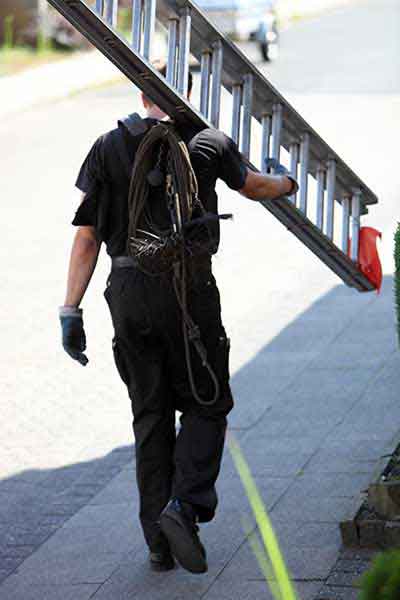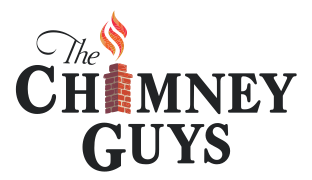Charlottesville: Preventing Chimney Fires Is as Easy as Scheduling a Sweeping With The Chimney Guys
All kinds of things can find their way into your chimney over time. Birds, squirrels, and other creatures like to nest in them, outside debris can blow in, and don’t forget about the one thing that’s impossible to avoid – creosote.
All of these things can threaten the performance, safety, and condition of the chimney system, so having them removed before you light a fire in the fireplace is a must. That’s why chimney sweepings are such an important service and should be routinely scheduled.
Creosote & Chimney Fires
One of the major functions of a chimney sweeping is to remove creosote from the chimney system. So, what is creosote exactly? Sweeps mention this substance a lot, and it’s clear that it isn’t good for your chimney, but… what is it?
Well, creosote is a residue that forms when you light a fire. Basically, the smoke, condensation, and acidic gases that the fire produces cool as they near the top of your chimney. As they cool, they settle onto the interior walls of the chimney, forming creosote.
What does creosote look like? Well, it’s typically very dark in color, and it can come in a few different forms – flaky, sticky, or hard/glazed.
The most important thing to note is that, no matter the form or color it takes, creosote is extremely flammable. If it isn’t regularly removed from your flue, you could experience a chimney fire.
Now, your firebox can handle that kind of heat, no problem. But your chimney liner and masonry? Not so much.

Can I Stop Creosote From Forming?
No matter how well you maintain your fireplace, creosote is always going to accumulate (even if only a little bit) when you light fires. Fortunately, there are practices you can adopt to significantly slow the rate at which it forms. These include the following:
- Using only seasoned wood as fuel
- Burning hotter fires
- Prioritizing good airflow
- Warming the flue before starting a fire
- Avoiding burning artificial logs
- Opening the damper fully to invite in plenty of oxygen
If I’ve Had a Chimney Fire, I’ll Know, Right?
Most people assume they’ll know if they’ve had a chimney fire. After all, they’ve got to be pretty loud, obvious events, right? Well, that’s not actually the norm. The Chimney Safety Institute of America (CSIA) points out that most chimney fires are actually very quiet in nature, leaving homeowners unaware that anything has happened at all.
While it’s true that some chimney fires make loud popping noises, produce large amounts of smoke, or give off a really intense smell, this just isn’t the case with most.
How can this be? Fires need oxygen and fuel to be large and noticeable, but chimney fires don’t have much access to either of these elements. This means that they burn slowly, not drawing much attention.
That being said, temperatures still remain extraordinarily high, so don’t underestimate the damage they can do! If you’ve had a chimney fire, repairs will definitely be required before your system is safe for use again.
That’s Some Scary Info! Should I Be Worried?
Learning about chimney fires tends to leave fireplace owners feeling pretty unsettled. These events can do quite a bit of damage in a hurry, and they’re sneaky about it, too.
The good news is routine, regular chimney sweepings can ensure chimney fires don’t become a threat to your home. And The Chimney Guys can take care of that important service for you.
We have hundreds of hours of training and education under our belts, and a CSIA certification to show for it. Combine that with 10+ years of hands-on experience, and you can feel good about trusting us to handle your next sweeping. Not one area of buildup will be missed!
Call at 434-481-3796 to schedule a chimney sweeping and get the peace of mind you and your household are entitled to.
Don’t forget to set up your annual chimney inspection with our expert chimney inspections and sweepings crew.
